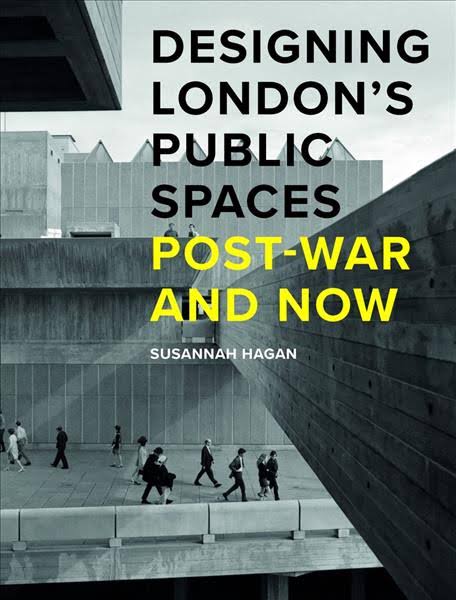Post
BOOK REVIEW | Designing London's Public Spaces
26 Mar 2020
Designing London's Public Spaces: Post-War and Now
By Susannah Hagan
(Lund Humphries, £45)
Reviewed by Darryl Chen
Too often public spaces are described and assessed as the theatre of events and activity rather than as the specific product of design. Public space designers are well aware how critical design is to the success of a space, however too often there is a default to thinking from a use perspective. This book aims to correct that bias and sets out a clear statement of the importance of design to public spaces.
The selected case studies should be well-known to Londoners; equally the "idea worlds" should be familiar, with an established interpretation of modernism used as a constant reference point. However there is a depth and rigour to the analysis that makes this a useful contribution to the literature, and betrays its origins as a product of academic research. Students particularly will benefit from early chapters defining its subject matter – What is public? What is space? How does it differ from public realm? Who can it be considered to be for? and What is it supposed to do? This is a great reference book richly illustrated and including very useful chronologies of the cases studies.
The Southbank's inclusion is particularly welcome in the light of the London Society's 2019 Banister Fletcher address by Jude Kelly, Southbank's former artistic director. Kelly's simple narrative of how the arts centre's public spaces were transformed to become more egalitarian was a simplification of a complex development story that saw many designers and civil servants struggle with contemporary debates about the design of public space. Hagan locates the production of Southbank's public spaces within contemporary planning policy and prevailing professional trends, proving that only in hindsight can one reduce this vast project to a simple narrative. The Southbank was to become a demonstration project for brutalism (as well as Scandinavian Modern), the separation of car traffic from above-ground pedways, and the concept of ‘townscape’ to guide the collective composition of buildings.
There are wonderful archival snippets that give character to this otherwise very earnest account. LCC architect and Archigram member Warren Chalk is quoted joyfully describing the walkways in reference to the famous animal enclosure at the London Zoo: ‘a sort of Mappin Terrace for people instead of goats’.
Somewhat frustratingly, Hagan ends the narrative short of what the Southbank has become today, in order to neatly contain the case study as an example of modernist public space as compared with contemporary public space. Whilst conceived and built in the former mode, it has now been adapted into the latter, the richness and peculiarities of the public spaces now clearly evidencing both impulses. The reader is left with a portrayal of the walkway system as a failure of ‘conventional legibility’ that is successful today only in spite of its modernist roots, rather than acknowledging the latent potential of these weird and wonderful concrete structures.
This however is to single out one instance in a book that otherwise presents an array of issues and projects with thoughtfulness and concision. In particular, Hagan's section on emptiness and commerce are balanced and worthy of much reflection. From Elephant and Castle Shopping Centre to Westfield London in White City, the British Library to West Croydon Interchange, Hagan's work is cleanly presented and a recommended book both for studying and browsing.
Darryl Chen is Head of Urban Design at Hawkins\Brown
